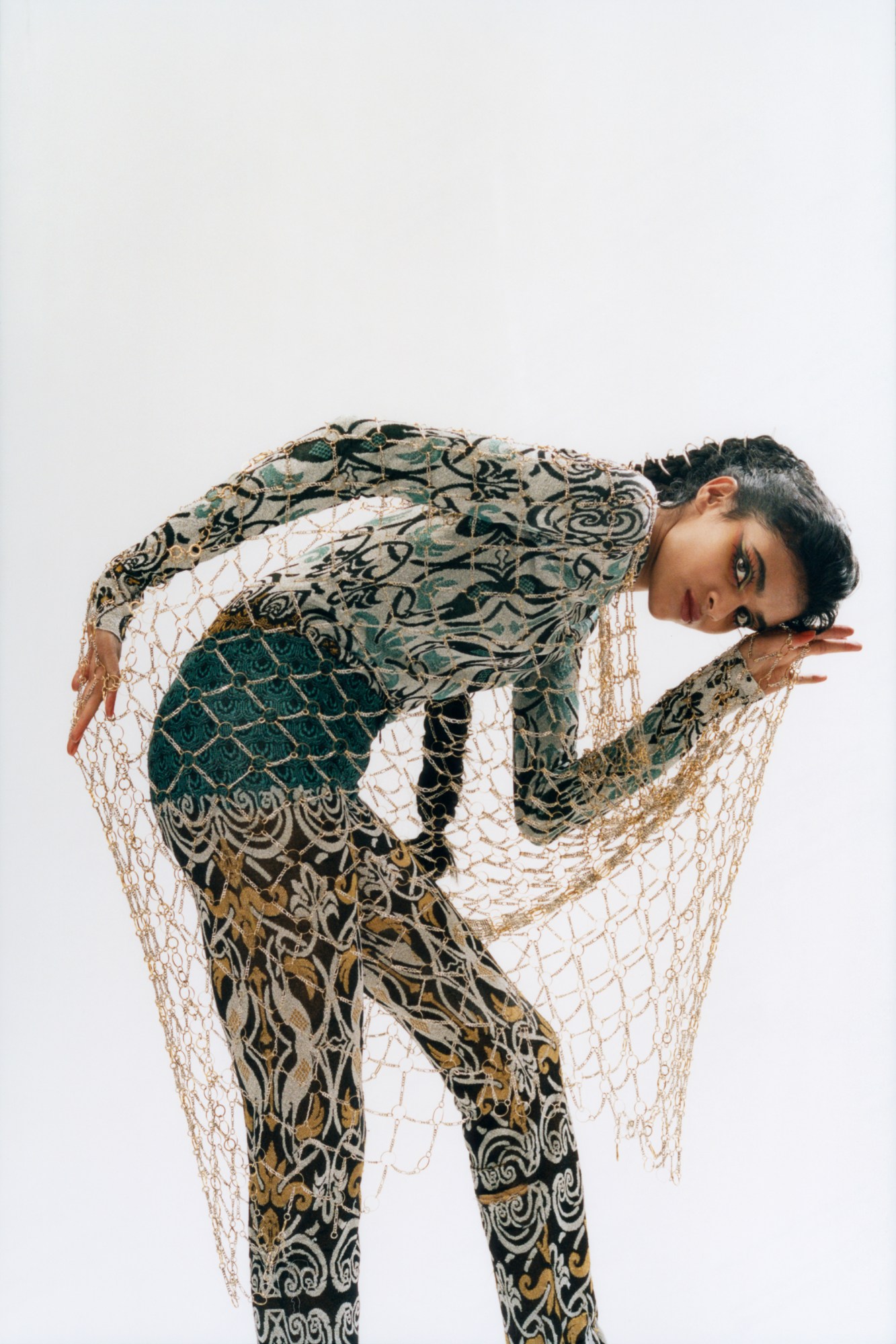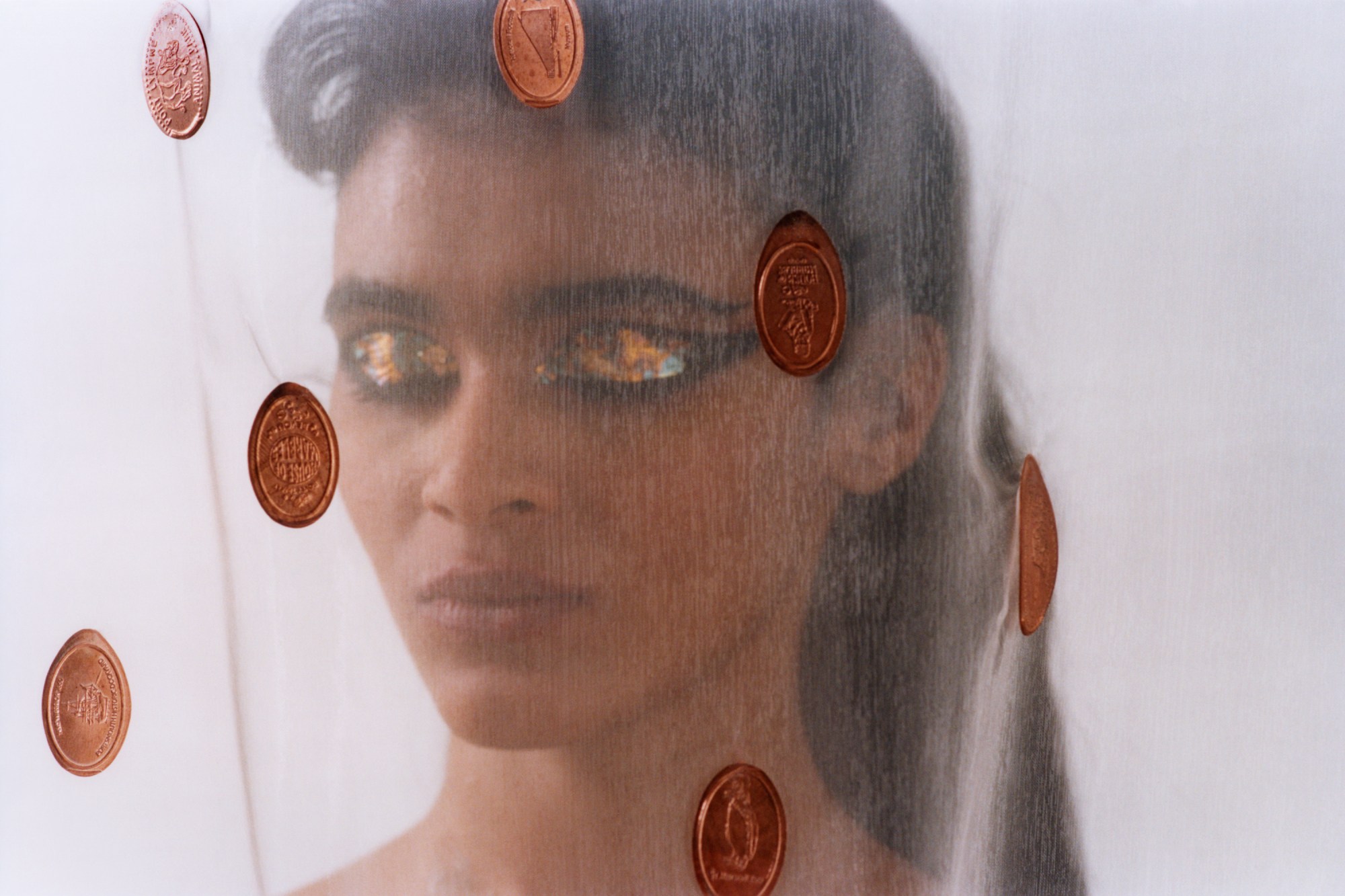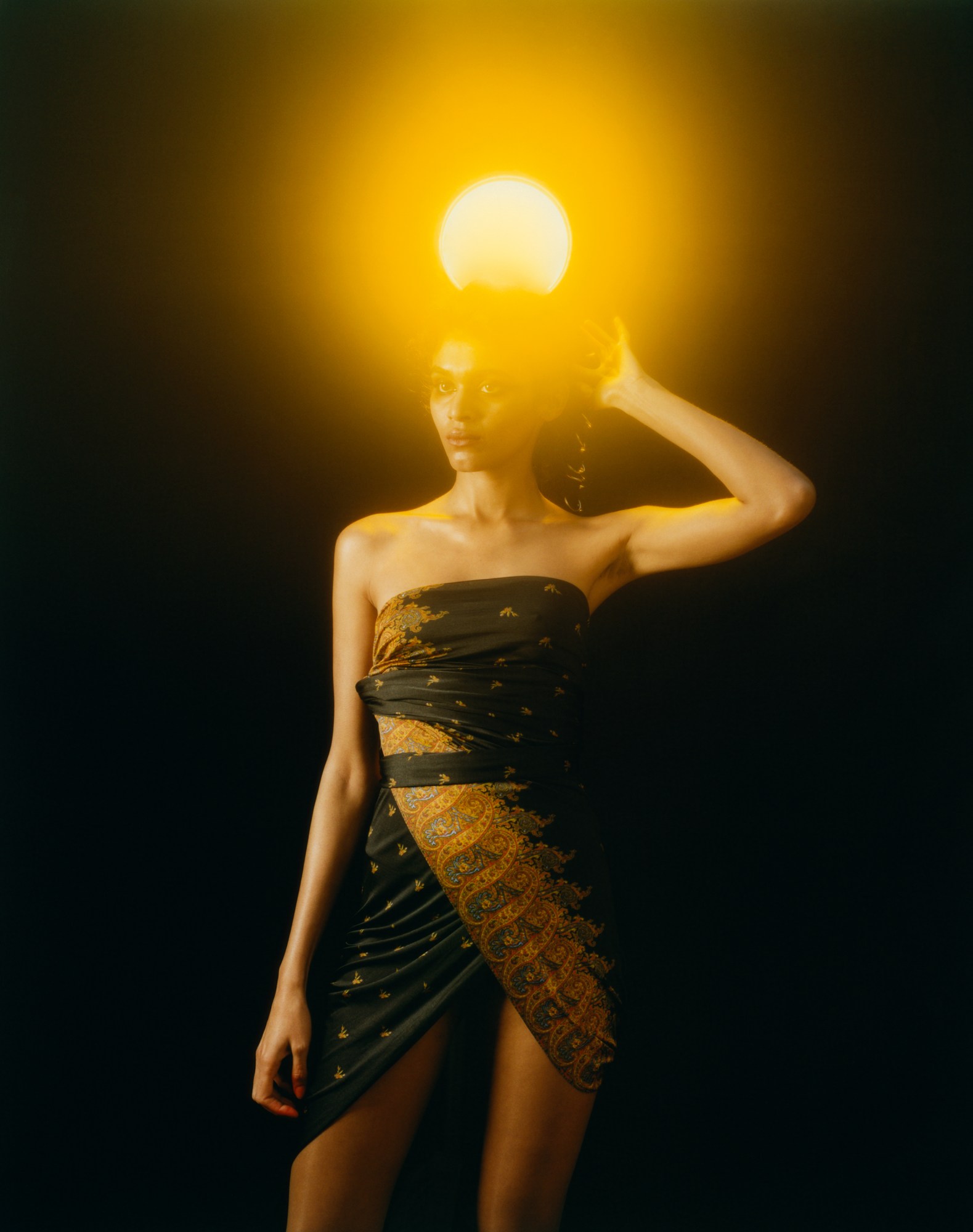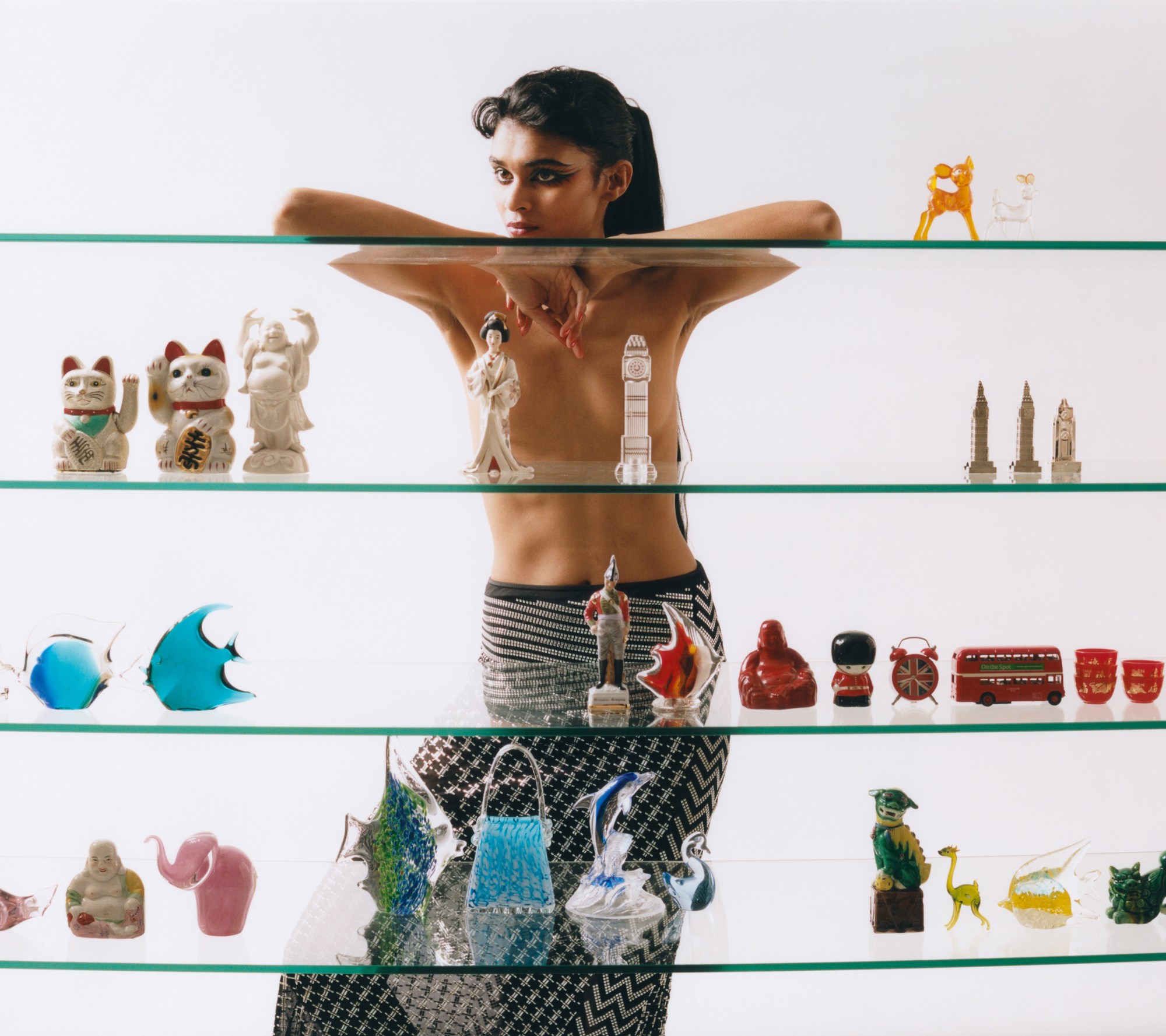This story originally appeared in i-D’s The Homegrown Issue, no. 355, Spring 2019.
It’s become increasingly rare for a fashion show to evoke such delight simply by showing brilliant clothes. On a balmy Thursday afternoon in Paris back in September, Julien Dossena did just that. He staged a no-frills, no-gimmicks show for Paco Rabanne that was utterly hypnotic. The clothes were deliciously eclectic, wildly mixed and mismatched. There were glittering knits, sinuous pleated jerseys and floral chainmail. It conjured up an era of pre-globalised travel. It was a perfect stew of unexpected references and gestures. It was everywhere and right here, right now.
“It is so fulfilling when people see it and don’t have to ask about it,” Julien begins. Unfortunately for him, we’re sitting in his bright clinically-white office overlooking Avenue Montaigne and I’m here to ask him all about it. Not that this polite, well-mannered Frenchman would ever have a problem with that. “It’s always about ideas I find interesting and the women around me, and how to give them more confidence and efficiency in their life.”
Last summer, his Instagram feed was flooded by friends travelling to far-flung places – Patagonia, India, Japan – and it struck him that they all just wanted to get away from the modern world for a bit. “You see them in a blouse they have bought on holiday, worn with jeans or a little jacket, maybe with flip flops. It’s things that you can wear here or there. I wanted to give them that back in a designed way, with lots of freedom.” With that simple anecdote, he summed up one of the best collections of the season.

It’s been five years since Julien arrived at Paco Rabanne, a fashion house once known for its groovy space-age chainmail and breastplated metal dresses à la Barbarella, and more recently, for its blockbuster fragrances. Slowly and quietly, he has transformed it into a destination for contemporary fashion design, and the business is thriving. In person, he’s far from his designs — jeans and a navy sweater seem to be his uniform of choice — and he’s not one for oversharing on Instagram or stepping into the limelight. Yet his approach has worked: the brand now has over 200 retailers and double-digit growth. Little wonder he is finally getting the attention he deserves. “I wanted to build a house that deserves time,” Julien explains. He started by asking a simple yet important question: what should fashion be today? “It’s about making good clothes and making those clothes relevant to wear and desirable.”
It was clear to him that Paco Rabanne wasn’t going to be an overnight overhaul, and he certainly wasn’t given carte blanche, or the budget, to rebrand as extremely as other creative directors have done in recent years. So he developed what he called the pillars: logo underwear, cotton jersey sportswear, bucket bags and metal-paillette purses and modern-silhouetted dresses and tailoring. “To have built on solid foundations makes you more confident in the path that you’re taking for the brand,” he says, adding that it gave him freedom to become more conceptual in his seasonal shows.

It took him a while to really grapple with chainmail, the house’s iconic staple. For the first few years Julien steered clear of full-on Space Age shift dresses, but when they did come they were light and utterly modern: a jangling plastic disc skirt worn with a white shirt; squares of grey suiting flannel and camel-hued cashmere geometrically interlinked; fluidly slinky chainmail skirts with wide slits; a silk and lace slip with a magically jigsawed hem. In other words, not really Space Age at all.
Julien’s emphasis on modernity is symptomatic of his training at Balenciaga under Nicolas Ghesquière. First he studied art history in Paris, then went to La Cambre in Brussels. Balenciaga was the only house he wanted to work for upon graduating. “I would have stayed there for 25 years if Nicolas was still there,” he says of the company he joined as an intern and left as a senior designer. “But he isn’t.” Five years later, he recognises what the experience taught him. “It’s about execution of every detail, and observing everything that you put into ever image, every show, every piece of clothing, every shop.”

After Ghesquière left Balenciaga in 2012, Julien did too – setting up his own label, Atto, which was soon shortlisted for the LVMH Prize. But when his former Balenciaga colleague, the stylist Marie-Amélie Sauvé recommended him for the job at Paco Rabanne, his career took a different path. “I thought it was such a great name because it’s so unique in the landscape,” Julien explains. “Paco Rabanne, along with Pierre Cardin and André Courrèges, was a pioneer. Together they broke the system. They didn’t want couture or the bourgeoisie any more. It was about freedom, youth and sexual liberation.”
Back in 1966, Rabanne broke with convention and staged a show with models of colour and music, reflecting the spirit of the Swinging Sixties. Plastic, metal and even paper were part of his arsenal of materials, making his sculptural dresses more akin to art than clothes. Coco Chanel dismissed him as the “metallurgist”; Peggy Guggenheim was one of his first customers. His chainmail was a precursor to Gianni Versace’s beloved liquid gold. “In France, during the 60s, we had a similar women’s liberation movement as in America,” Paco Rabanne reflected in 2002. “It was a moment when women emerged to be warriors because they needed to affirm their desire of emancipation, freedom, and liberty. The armour was almost necessary.” Rabanne also spoke extensively about his past lives, in one of which he travelled to Earth from the planet Altair, to organise civilisation on this planet 78,00 years ago, resulting in his nickname: ‘Wacko Paco’. Dossena sees his work with a generous hindsight. “He saw the woman as a weapon,” Julien explains. “It was the perfect formula to be relevant and driven by what is happening right now.”

Rabanne is still alive, but distant from the fashion world. The perfume businesses he set up in the 70s, mostly aimed at men, is still robust and account for the majority of the brand’s revenue. You might recognise some of them from television adverts – most of them starring suited-and-booted male models accompanied by girls in miniscule mini dresses – with names such as 1 Million and Pure XS. It’s fair to say there’s a substantial gulf between Dossena’s fashion and the fragrances that shares its name.
“Originally, the perfume followed the fashion, but now we we have to build back the fashion,” he says. Slowly, the sense of modernity that Dossena has brought to the brand is beginning to influence the advertising imagery of the fragrances. Later this year, he’ll even oversee the launch of a new perfume for the brand. “Now that everyone understands what my proposition is for Paco Rabanne, I can let go and talk about it with freedom, and begin to have fun with it and make it personal.” He’s only just getting started. The moral of Julien Dossena’s ascent? Slow and steady wins the race.
Credits
Photography Joyce Ng
Styling Bojana Kozarevic
Hair Shiori Takahashi at Streeters using Wella Professionals. Make-up Daniel Sallstrom at CLM Hair and Beauty using NARS Cosmetics. Nail technician Ama Quashie at Streeters using Illamasqua. Set design Suzanne Beirne at D+V Management. Photography assistance Pedro Faria, Victor Paré Rakosnik and Zara Manzoor. Styling assistance Emily Jones. Hair assistance Chika Hamada. Make-up assistance Charlie Murray. Set design assistance Tom Schneider and Joe Winter. Model Radhika Nair at Storm. Special thanks to Hackney Studios.
Radhika wears all clothing Paco Rabanne.
